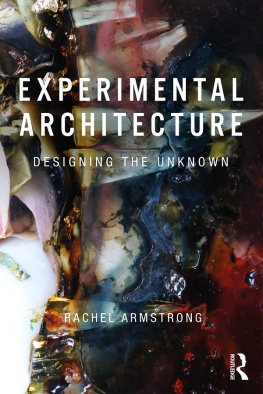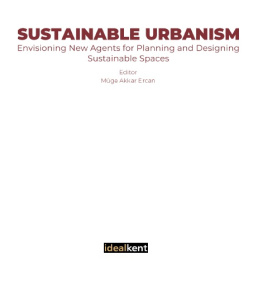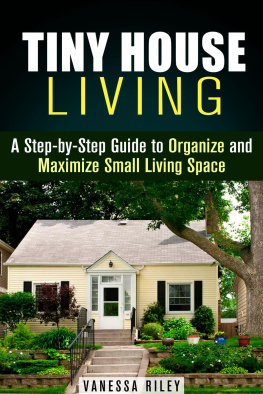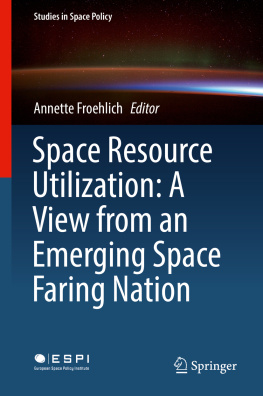S t a r A r k
A Living, Self-Sustaining Spaceship
A Living, Self-Sustaining Spaceship
Rachel Armstrong , PhD.
Professor of Experimental Architecture
Newcastle University
Newcastle-upon-Tyne , UK
Springer Praxis Books
978-3-319-31040-4 ISBN 978-3-319-31042-8 (eBook)
DOI 10.1007/978-3-319-31042-8
Library of Congress Control Number: 2016952869
Springer International Publishing Switzerland 2017
This work is subject to copyright. All rights are reserved by the Publisher, whether the whole or part of the material is concerned, speci cally the rights of translation, reprinting, reuse of illustrations, recitation, broadcasting, reproduction on micro lms or in any other physical way, and transmission or information storage and retrieval, electronic adaptation, computer software, or by similar or dissimilar methodology now known or hereafter developed.
The use of general descriptive names, registered names, trademarks, service marks, etc. in this publication does not imply, even in the absence of a speci c statement, that such names are exempt from the relevant protective laws and regulations and therefore free for general use.
The publisher, the authors and the editors are safe to assume that the advice and information in this book are believed to be true and accurate at the date of publication. Neither the publisher nor the authors or the editors give a warranty, express or implied, with respect to the material contained herein or for any errors or omissions that may have been made.
Cover design: Jim Wilkie
Printed on acid-free paper
This Springer imprint is published by Springer Nature
The registered company is Springer International Publishing AG Switzerland Pref ace
This anthology examines the Interstellar question i.e. the idea that we may one day live beyond the world we know and settle distant planets. A challenge on this scale requires not only vision, but multiple voices for the acknowledgment of complexity and contradic-tions. These are inherent in the quest. Taking a multidisciplinary and cultural view of the challenge, the book accordingly seeks to provide a form of cultural catalysis by which an interstellar culture may be seeded (it is, in other words, emphatically not a technical manual seeking to offer formal solutions to particular problems). To address such ambi-tions, the book has been divided into two main sections Part I and II in which differing conventions of writing have been deployed.
Part I, written by Rachel Armstrong, proposes a new age of space exploration based on an ecological perspective of the cosmos. It is this that will create the conditions for inhab-iting starships and, ultimately, new worlds. Drawing on her leadership of the Persephone Project, this section adopts an experimental, yet testable, and inclusive approach to con-structing a livable and self-sustaining starship. Persephone is part of the Icarus Interstellar groups portfolio of work an international consortium of aerospace engineers aiming to construct a starship research platform in Earths orbit within the next hundred years. This means a series of Earth-bound experiments are being detailed through a wide range of laboratory types that inform us about how we live with and design ecosystems on this planet and beyond.
Part II, which is edited by Rachel Armstrong, introduces other voices to explore the Interstellar Question. The editors aim here has been to create a productive interplay between differing perspectives and disciplinary backgrounds via themed, multi-author chapters. These are organized into, sections, presenting distinct viewpoints for examining the Interstellar Question. Topics include: the interstellar mission (Andreas C. Tziolas, Nathan Morrison, Esther M. Armstrong), space ecology (Michael N. Mautner, Simon Park), (Barbara Imhof, Peter Weiss, Angelo Vermeulen; Astudio Emma Flynn, Richard Hyams, Christian Kerrigan, Max Rengifo; Susmita Mohanty, Sue Fairburn), space bodies (Kevin Warwick, Arne Hendriks, Rachel Armstrong, Sarah Jane Pell), connecting with the divine and the sacred and becoming cosmically conscious (Steve Fuller, Roberto Chiotti, vi Preface
Krists Ernstsons), constructing worlds (Jordan Geiger, Mark Morris) and interstellar research methodologies (Rolf Hughes, Rachel Armstrong). The unconventional structure explores how different perspectives must be brought into a productive dialogue when considering the fundamental principles for inhabiting space. If, as a result, the book resembles a Tower of Babel for the space age, this is a design choice that invites us to address our innate diversity. Readers are invited to re ect on what these different perspec-tives mean for a coherent approach to settling environments far, far beyond the familiar planet we call (for now) home.
Contents
List of Contributors .................................................................................................. xiv
PART I An Ecological View of the Interstellar Question
Chapters
1 The Interstellar Question: an ecological view by Rachel Armstrong ...........
1.1 Philosophy of space ................................................................................ 2
1.2 Prototyping the interstellar question .......................................................... 5
1.3 It begins ...................................................................................................... 13
1.4 Mission ....................................................................................................... 13
1.5 Aspirations ................................................................................................. 13
1.5.1 Introduction .................................................................................... 14
1.6 Ecocene ...................................................................................................... 15
1.7 Space ecology ............................................................................................ 18
1.8 Who are we? ........................................................................................... 19
1.9 Summary .................................................................................................... 20
References ........................................................................................................... 20
2 Architecture and space exploration by Rachel Armstrong ...........................
2.1 The interstellar challenge ........................................................................... 21
2.2 Far, far away ............................................................................................... 22
2.3 Architecture as a survival strategy ............................................................. 24
2.4 Space skyscraper ........................................................................................ 28
2.5 What is this place called space? ............................................................. 33
















